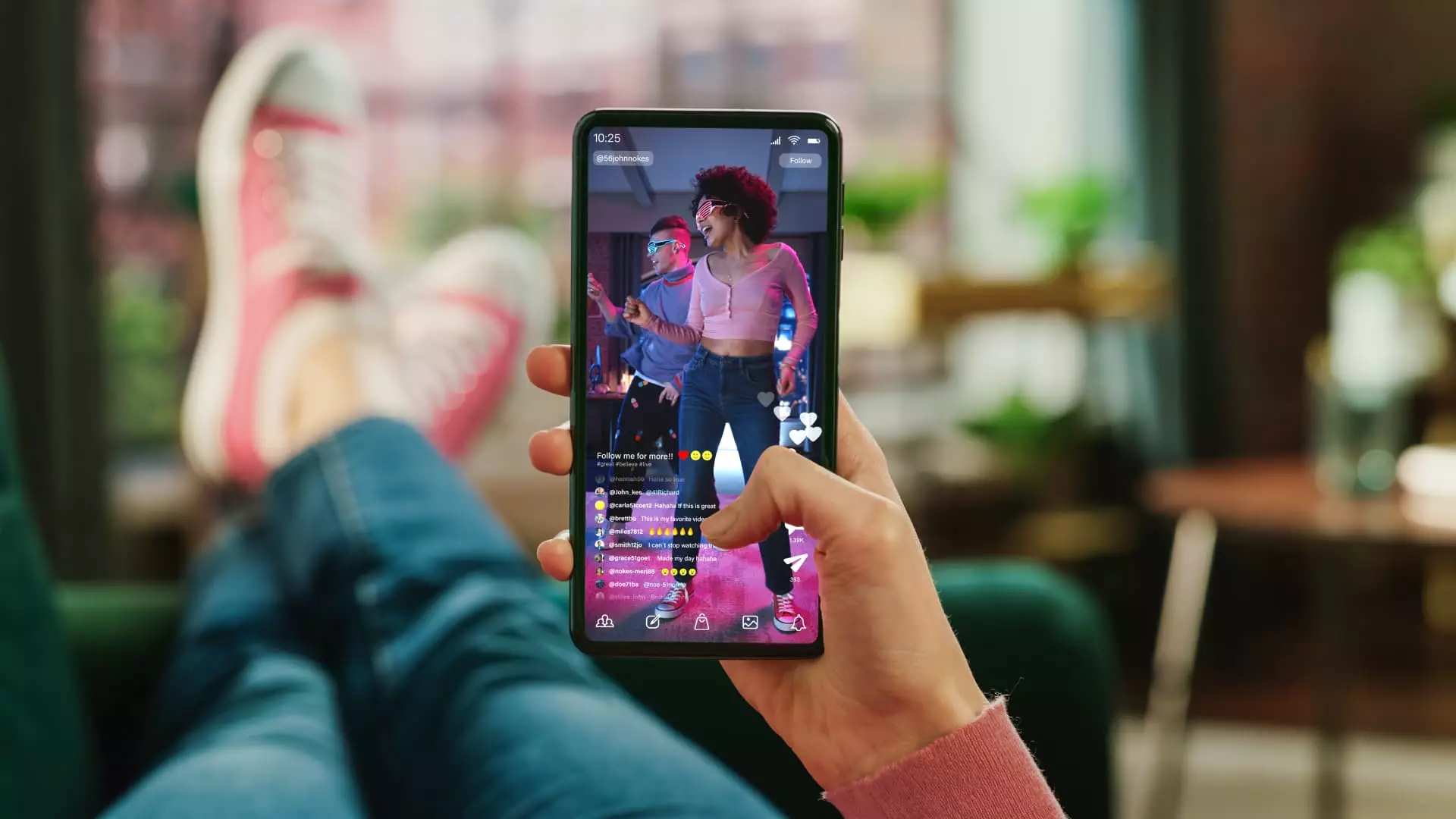Since its global debut in 2016, TikTok has seized the short-form video market with an iron grip, amassing over 1.12 billion monthly active users worldwide. This platform isn’t just a passing trend; it has transformed into a cultural juggernaut, particularly among younger demographics who spend a staggering average of 108 minutes daily engrossed in scrolling through bite-sized content. As a result, established tech giants like Meta and Google have found themselves scrambling to recalibrate their strategies to keep pace with TikTok’s meteoric rise. The unsettling reality is that TikTok’s algorithmic finesse seems unmatched, effectively positioning it as the cultural epicenter for millions.
A New Standard of Engagement
The sheer volume of content being created and consumed on TikTok has upended traditional social media usage patterns. Jasmine Enberg, Emarketer’s insightful vice president, succinctly encapsulates this phenomenon: TikTok has set the tone for social media engagement today. It’s not merely a place for entertainment; it influences trends, shapes news narratives, and even fosters e-commerce activities. Platforms like Instagram Reels and YouTube Shorts are developing strategies to mimic TikTok’s allure, but their efforts often come up short. The question arises: in this race to replicate TikTok’s success, are competitors losing a sense of their core identities?
The Dark Side of TikTok’s Popularity
While TikTok’s grip on entertainment and engagement grows stronger, we must not overlook the darker implications of its influence. As more users become ensnared in the vortex of endless scrolling, experts are raising alarms about the consequences on mental health. Dr. Yann Poncin from Yale underscores the dangers of disrupted sleep patterns and heightened anxiety levels that accompany this insatiable consumption of short videos. It’s a troubling irony that while these platforms promise instant gratification, they may also be robbing young users of their mental well-being. The entertainment landscape has morphed from immersive storytelling into fragmented experiences designed solely to captivate attention, often at a profound psychological cost.
Are Creators Really Thriving?
Despite the extraordinary level of engagement TikTok commands, monetization avenues for creators remain dishearteningly narrow. Unlike traditional platforms, where long, engaging content allows for comprehensive ad placements, TikTok’s format significantly limits advertising opportunities. Even the once-potent allure of going viral seems hollow when creators are left with minuscule earnings per million views. With YouTube Shorts reportedly paying a scant four cents per 1,000 views, or TikTok’s ad revenue models that still fail many creators, it raises a pertinent question: Is it truly worth the effort? The irony is palpable: TikTok’s explosive popularity has not translated into sustainable financial success for many of the creators that fuel its platform.
The Competitive Landscape Shifting
As the regulatory scrutiny on TikTok grows due to its Chinese ownership, competitors are keenly eyeing the potential disruption this could cause. The possibility of a TikTok ban in the U.S. presents a vast opportunity for platforms like Meta and YouTube to reclaim advertising dollars that might otherwise flood away from TikTok. With eMarketer forecasting that competitors could capture up to 50% of reallocated ad revenues, it becomes apparent that the battle for dominance is heating up. However, the looming question remains: if TikTok were restricted, would the alternate platforms adapt to fill this void effectively, or would they merely replicate the same pitfalls?
TikTok’s uneven rise serves as a stark reminder of the precarious balance in new media ecosystems. As we revel in the entertaining chaos of short-form video, it merits thoughtful consideration of the long-term implications it holds for consumer behavior and mental health. Rather than simply following the TikTok model, perhaps these rival platforms should instead focus on meaningful engagement that adds value to users’ experiences—lest we find ourselves within an increasingly fragmented and detrimental digital landscape.

